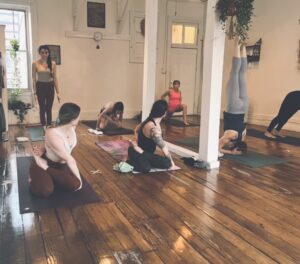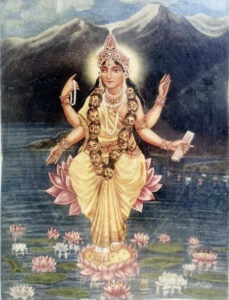About Mysore Style

In Mysore Class, the teacher works individually with students to teach them a sequence of postures, breathing, gazing points, and connecting movements.
Through this process and with consistency and repetition, students memorize the sequence. this individual process with the teacher makes this practice accessible to anyone. The teacher slowly adds more as is appropriate for each student.
Students are able to practice independently and at their own pace while surrounded by the energy and inspiration of other students in the room. Students are encouraged to start their practice at any time within the timeframe of the class so long as they have enough time to finish.
Guidance is offered to students on an individual level, taking into account the skill and capabilities of the practitioner so that their practice can flourish. Much of the learning in a Mysore class is based on your relationship with your teacher. The teacher observes your practice daily, and can provide feedback through hands on and verbal instruction.
The practice is a regular, simple discipline of movement and breath. One by one, postures are practiced with linking movements termed “vinyasa”. Breathing is choreographed onto these movements and postures to create a codified system. Over time and through regular practice, individuals learn to develop physical and mental skills which can lead to a spacious sense of awareness and intuition.
These limbs are, yama (moral principles), niyama (observances), asana (posture), pranayama (breath control), pratyahara (withdrawal of the senses), dharana (concentration), dhyana (the practice of meditation) and samadhi (absorption or merging with the divine.).
Sequences
A set of 6 sequences of asanas was developed through which, when practiced regularly over months and years, offer infinite ways for practitioners to explore deeper learning, know oneself, and become established in yoga.
Primary Series or Yoga Chikitsa (yoga therapy) the first sequence
Nadi Shodhana, (nerve cleansing) the intermediate series
Sthira Bhaga (divine steadiness) advanced series
The name “Ashtanga Yoga” is not referring so much to the sequences of postures typically used, but rather has more to do with the lineage, and traditions of learning yoga. The Sanskrit meaning is “eight limbs” in Patanjali’s yoga sutras.
Opening Mantra
vande gurūṇāṁ caraṇāravinde
saṁdarśita-svātma-sukhāvabodhe |
niḥśreyase jāṅgali-kāyamāne
saṁsāra-hālāhala-moha-śāntyai ||
Gist: Because I want more peace of mind and stability in
life, I faithfully practice yoga as I have learned it from my
teacher (guru).
Interpretive: For the peaceful resolution of the deluding
& toxic nature of existence, I bow at the lotus feet of my
Guru to behold the awakened joy of my own Soul, to seek
refuge and receive spiritual healing & enrichment.
Closing Mantra
svasti-prajābhyaḥ paripāla-yantāṁ
nyāyena mārgeṇa mahīṁ mahīśāḥ |
go-brāhmaṇebhyaḥ śubhamastu nityaṁ
lokāḥ samastāḥ sukhino bhavantu ||
! śāntiḥ śāntiḥ śāntiḥ
May the leaders of this earth protect the welfare of all life
by adhering to the path of virtue. May the wise, the noble,
all people & all creatures be eternally blessed. May the
whole of all the worlds be happy.
 exchange between teacher and student, in which students develop a personal practice that is unique to their own experience. It is our belief that this regular practice
exchange between teacher and student, in which students develop a personal practice that is unique to their own experience. It is our belief that this regular practice